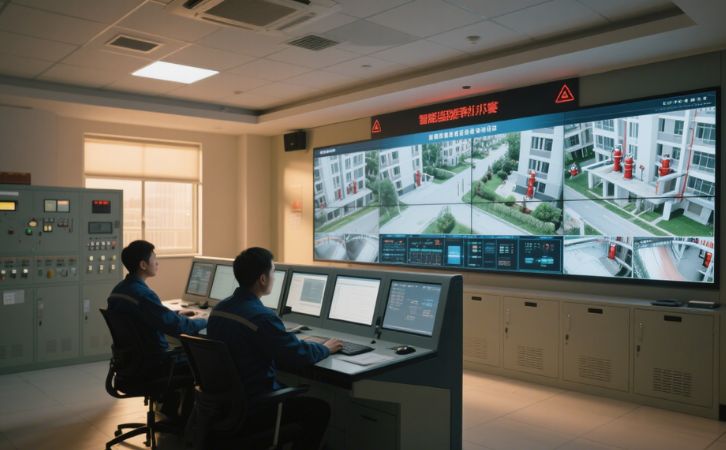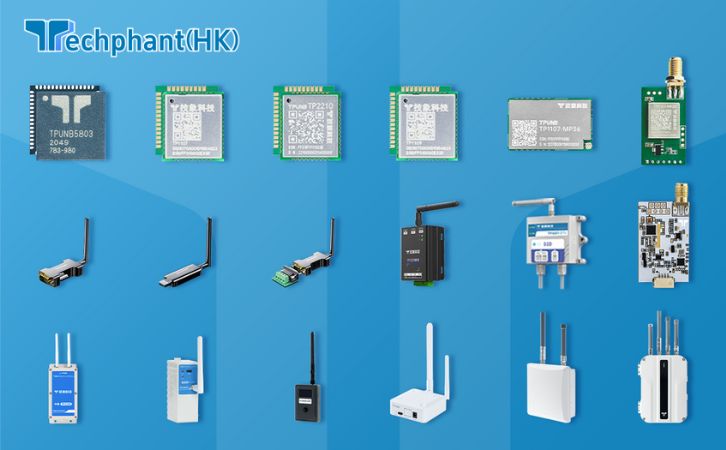Wildfires pose a growing threat worldwide, driven by climate change, drought, and human activity, necessitating advanced monitoring solutions to enable early detection and rapid response. Low-power Internet of Things (IoT) networks, particularly Low-Power Wide-Area Networks (LPWANs), have emerged as a transformative technology for remote wildfire monitoring, leveraging energy-efficient sensors and long-range communication to cover vast, inaccessible areas. These networks enable real-time tracking of environmental conditions, such as temperature, humidity, and smoke, in regions where traditional infrastructure is impractical. This article examines the role of low-power IoT networks in remote wildfire monitoring, exploring their technical underpinnings, applications, challenges, and future directions.
I. Technical Foundations of Low-Power IoT Networks
Low-power IoT networks for wildfire monitoring rely on LPWAN technologies like LoRaWAN, NB-IoT, and Sigfox, designed for long-range, low-energy communication. LoRaWAN, operating in unlicensed sub-GHz bands (e.g., 915 MHz in North America, 868 MHz in Europe), uses chirp spread spectrum (CSS) modulation to achieve ranges up to 15 km in rural areas with data rates of 0.3–50 kbps. Its low power consumption allows sensors to operate for 5–10 years on a single AA battery, consuming less than 10 µA in sleep mode. NB-IoT, a cellular-based LPWAN, operates in licensed LTE spectrum, offering data rates up to 250 kbps and deep coverage for forested areas, with power-saving modes like Power Saving Mode (PSM) and extended Discontinuous Reception (eDRX).
Sensors, such as the Sensirion SHT40 for temperature and humidity or the MQ-2 for smoke detection, are deployed in networks connected to gateways or Customer Premises Equipment (CPE). These gateways aggregate data and relay it to cloud platforms via protocols like MQTT (Message Queuing Telemetry Transport) for real-time analysis. For example, a LoRaWAN gateway might collect data from hundreds of sensors across a forest, using adaptive data rate (ADR) to optimize transmission power based on distance. Edge computing on gateways enables local analytics, such as detecting sudden temperature spikes, reducing cloud dependency and bandwidth use. Security features like AES-128 encryption for LoRaWAN and LTE-grade security for NB-IoT protect data integrity in remote deployments.
II. Applications in Wildfire Monitoring and Prevention
Low-power IoT networks enable a range of wildfire monitoring applications, particularly in remote and rugged terrains. In forested areas, LoRaWAN-based sensors monitor environmental parameters like temperature, humidity, and CO levels, transmitting data to gateways for analysis. For instance, Australia’s CSIRO has deployed LoRaWAN networks in bushfire-prone regions, with sensors sending hourly updates to predict fire risks, achieving battery lifespans of up to 7 years. These systems integrate with weather data to model fire spread, enabling early warnings to fire departments.
In national parks, NB-IoT sensors provide reliable connectivity in areas with cellular coverage, supporting applications like real-time smoke detection. For example, a network in Yellowstone National Park might use NB-IoT to monitor air quality, with sensors reporting data every 15 minutes to a cloud platform like AWS IoT Core, triggering alerts when thresholds are exceeded. Sigfox, another LPWAN, is used for low-bandwidth applications, such as tracking fire-prone vegetation conditions, with sensors sending small packets (up to 12 bytes) daily. These networks also support integration with drones or satellites, where IoT gateways relay data to aerial systems for thermal imaging, enhancing situational awareness. Such applications demonstrate the scalability and flexibility of low-power IoT networks in combating wildfires.
III. Advantages of Low-Power IoT Networks
Low-power IoT networks offer significant advantages for remote wildfire monitoring. Their energy efficiency is paramount, enabling sensors to operate for years without maintenance, critical in inaccessible areas where battery replacement is impractical. For example, a LoRaWAN sensor consuming 10 mA during transmission and 5 µA in sleep mode can last a decade on a 2000 mAh battery. Long-range capabilities allow sparse gateway deployments, with a single LoRaWAN gateway covering thousands of sensors across 100 km², reducing infrastructure costs.
Real-time monitoring is another key benefit, with IoT networks enabling rapid detection of fire indicators. For instance, a sudden 10°C temperature rise detected by a sensor can trigger an MQTT-based alert within seconds, facilitating faster response times than traditional patrols. Scalability is enhanced by protocols like LoRaWAN’s star-of-stars topology, supporting massive device densities for large-scale deployments. Integration with cloud platforms enables advanced analytics, such as machine learning models that predict fire risks based on historical and real-time data. Additionally, low-power networks are cost-effective, with LoRaWAN’s unlicensed spectrum avoiding the operational costs of cellular-based NB-IoT, making them viable for budget-constrained regions.
IV. Challenges and Limitations
Despite their advantages, low-power IoT networks face challenges in wildfire monitoring. Environmental conditions, such as extreme heat or dense foliage, can degrade sensor performance or signal propagation. For example, LoRaWAN’s sub-GHz signals may experience attenuation in thick forests, requiring strategic gateway placement. Sensor durability is another concern; devices must withstand temperatures up to 50°C and humidity extremes, necessitating ruggedized designs that increase costs.
Network reliability is critical, as interference in LoRaWAN’s unlicensed spectrum can disrupt communication in crowded areas. NB-IoT, while reliable, depends on cellular infrastructure, which is often absent in remote wilderness, limiting its applicability. Security is a significant issue; compromised sensors could send false data, delaying response or causing unnecessary evacuations. Implementing encryption like DTLS for CoAP or AES-128 for LoRaWAN on low-power devices increases energy consumption, potentially reducing battery life by 10–20%. Scalability also poses challenges; managing thousands of sensors requires robust network management tools to handle data routing and firmware updates. Finally, deployment costs, including sensors (~$20–50 each) and gateways (~$500–1000), can be prohibitive for large-scale projects in developing regions.
Conclusion
Low-power IoT networks, leveraging technologies like LoRaWAN, NB-IoT, and Sigfox, are revolutionizing remote wildfire monitoring by enabling energy-efficient, long-range, and scalable solutions. Their ability to monitor environmental conditions in real-time, integrate with cloud analytics, and support applications like early fire detection and risk prediction is transforming wildfire management. Advantages such as long battery life, cost-effectiveness, and scalability make these networks ideal for remote areas. However, challenges like environmental durability, network reliability, security, and costs require ongoing innovation in sensor design, network protocols, and deployment strategies. As advancements in 5G mMTC, energy harvesting, and AI-driven analytics emerge, low-power IoT networks will further enhance wildfire monitoring, offering sustainable and effective tools to protect ecosystems and communities.



